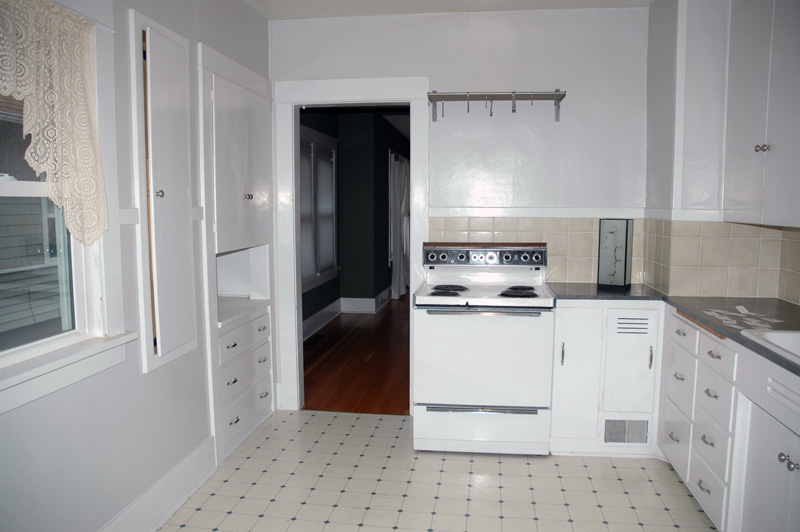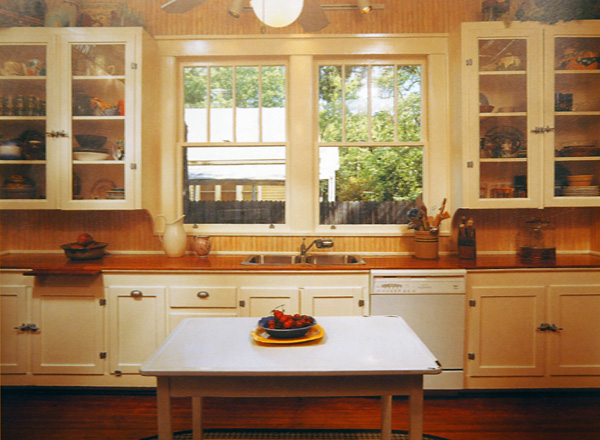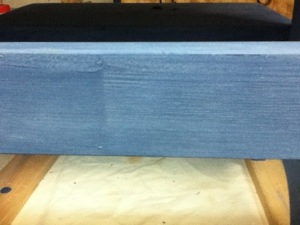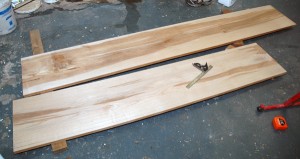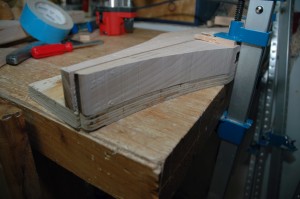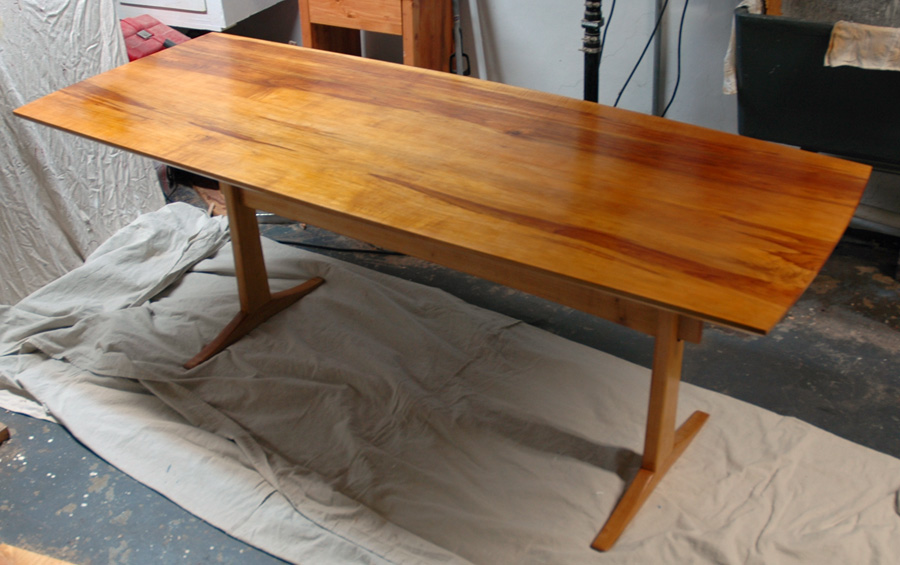House listings share with résumés an attempt to put the best light on the subject, and when writing either, it is easy to slip from positive spin to exaggeration, and to outright lying. The listing for our house claimed a recently updated kitchen, but “recently updated” here turned out to be some newish paint, a sheet vinyl floor less than a decade old, and new knobs on the cabinet doors. About the only thing that could be said for the kitchen when we first looked at the house in 2007 was that it didn’t feature cherry cabinets, granite counters, and stainless steel appliances. That particular look palled quickly as we scanned listing after listing and saw that 95% of all updated kitchens featured cherry and granite. By comparison, the gray walls, laminate countertops, and out-of-scale beige wall tiles were less than inspiring, certainly, but not a deal breaker. We could live with it for a time while we tackled more urgent projects–painting over the garish, glaring “designer colors” elsewhere in the house. And at least we wouldn’t have to feel bad about replacing a new kitchen.
Monthly Archives: February 2013
Kitchen Inspiration
Sorting some unfiled photos and found the following from Bungalow Kitchens. It was one of the primary inputs as we considered options for updating our neglected kitchen. We especially liked the painted cabinets, nickel hardware, use of glass in the upper cabinet doors, and the wooden counter top. The cabinet latches are unduly bulky, though, and we prefer inset hinges to the surface mounted ones used here.
Milk Paint
Milk paint sparks images of shaker oval baskets stacked in muted columns, but there’s more to its charm than vintage appeal. While opaque, it won’t hide the grain of your wood. It’s also relatively durable, although it will spot when exposed to water, and its appearance seems to improve with use, any dings adding a patina of venerability to a project.
Aritcles in Fine Woodworking and Popular Woodworking recommend the use of a natural bristle brush, but you can use a foam roller to apply. I use Old Fashioned Milk Paint, mixing equal parts water and powdered paint to produce only as much as I’ll use in a day or two at the most–let it sit longer and it will go bad–and roll it on without first wetting my projects to raise the grain. After a couple of coats, I’ll hand sand with 220 grit to knock down any raised grain, then apply another coat or two until I get the depth I want.
Milk paint dries flat and chalky. To bring out a little luster and even out the color, I apply a coat of boiled linseed oil and burnish with fine steel wool. The oil will darken the color, sometimes substantially, so to preserve the original hue while adding protection, topcoat with water-based polyurethane. Oil based poly will add a yellow color cast.
Trestle Table–Construction
Using wide boards minimized glue up, but it also required flattening them by hand. Fortunately
they were in good shape and were ready for glue before too long. While the top dried, I turned my attention to the trestle ends. I began by shaping the patterns for the feet and caps of the trestle ends. Before shaping those parts, though, I cut the mortises for the through tenons using a guide bushing and pattern. I had originally planned on using sliding dovetails to attach the top to the base, but after a couple of disastrous attempts to rout the dovetails, I decided to use screws instead.
The end posts were tenoned and mortised before shaping as well. With the curved tapers cut and smoothed, the ends were ready for glue. With the tenons wedged tight and glue drying I could return my attention to the top. Gently curves add some subtle visual interest to the top. I roguhed these out with a jigsaw, then planed them smooth, but it would have been easier to simply plane the curves on the long edges. As it was, the jig saw wandered a bit in the cut, and I had to use a chamfer along the bottom edge instead of a roundover on the the top and bottom edges.
The stretcher proved too long to tenon on the table saw, so I cut close on the bandsaw and fine tuned the fit by hand. Cutting the angled mortises for the wedges was probably the most difficult aspect of construction, but the wedges add a nice detail as well as allowing the base to be knocked down for transport. I cut the wedges on the bandsaw and fit each one to its mortise, then sanded all parts through 220 grit before applying several coats of orange shellac. Since a dining table is likely to see some abuse as well as exposure to water and alcohol, I topcoated the shellac with polyurethane.
In retrospect, I’m sorry I couldn’t get those sliding dovetails cut. They’re a more elegant solution to attaching the top to the base than screws. And while the shellac warmed the soft maple nicely, I’m curious to see what a little dye in the mix would have yielded.


